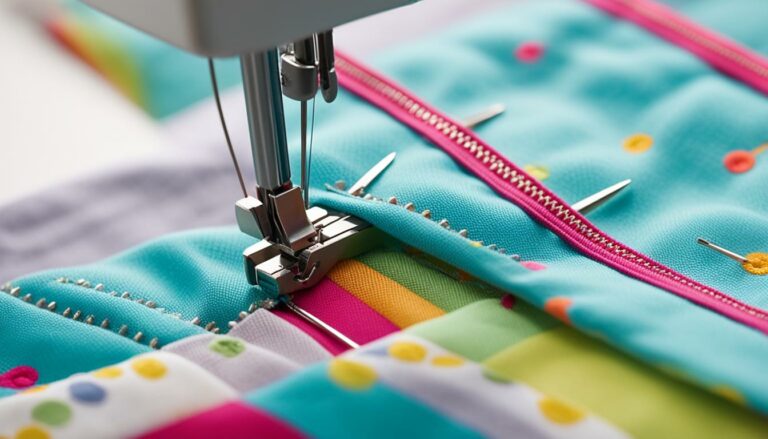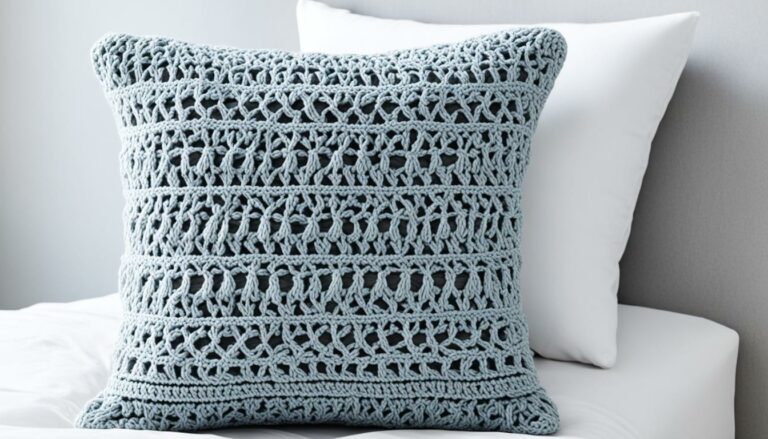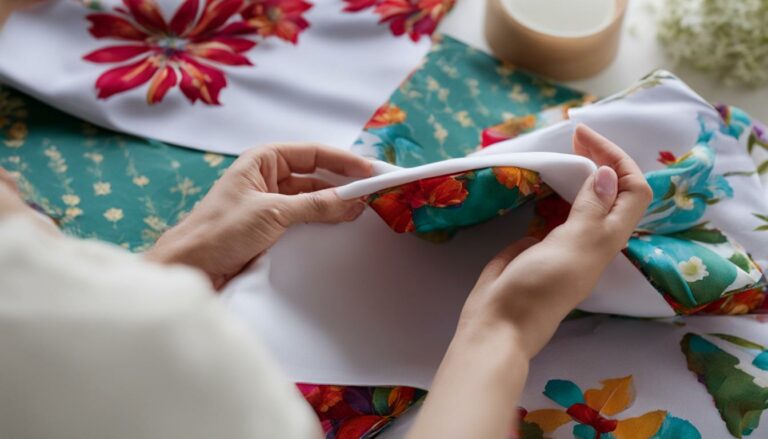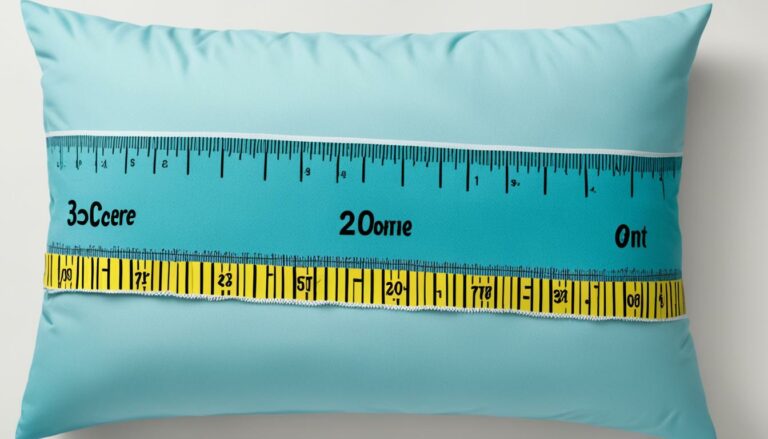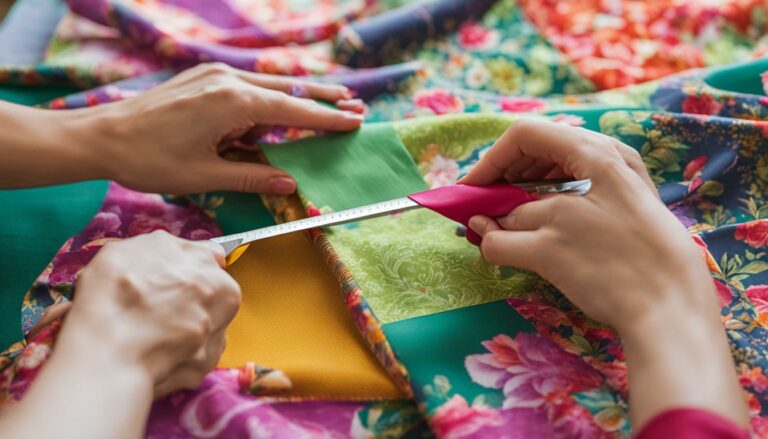Optimal Frequency for Changing Pillowcases Revealed
Eric Christie stands as a luminary in the bedding industry, with a career spanning nearly four decades since the early 1980s. His journey through the world of bedding has seen him wear many hats – a manufacturer, designer, and retailer, showcasing his versatility and expertise in Read more...
pillowsandbedsheets.com and its partners may earn a commission if you purchase a product through one of our links
Do you ever wake up with breakouts on your skin? It turns out that the culprit may be your pillowcase. Experts emphasize the importance of regularly changing your pillowcase to maintain good skin health and prevent breakouts. But how often should you change it? Let’s dive into the optimal frequency for pillowcase changes and why it’s crucial for your skin.
Key Takeaways:
- Changing your pillowcase regularly is essential for maintaining good skin health and preventing breakouts.
- Experts recommend changing your pillowcase at least two to three times a week to avoid congested skin.
- Replace your pillow every one to two years to ensure optimal hygiene.
The Impact of Pillowcases on Skin Health
Our skin, being the largest organ, requires diligent skincare hygiene habits to maintain optimal health. One often overlooked factor in skincare is the role of pillowcases in preventing breakouts and congested skin.
Throughout the night, our pillowcases accumulate dirt, makeup residues, and oils from our skin. If not properly cleaned, these impurities can lead to bacterial infections and breakouts, causing congested skin. Regularly changing pillowcases is an effective preventive measure to promote clearer, healthier skin.
By using clean pillowcases, you can ensure that your skin remains free from the build-up of bacteria and impurities that can clog your pores and lead to breakouts. Healthy skin begins with maintaining good skincare hygiene habits, and regularly changing pillowcases plays a crucial role in this routine.
“Proper skincare hygiene includes changing your pillowcase regularly to prevent breakouts and promote clearer skin.”
Notably, choosing the right pillowcase material can also make a difference in your skin’s health. Materials like silk or bamboo-blend pillowcases are known for their smoother surface, minimizing friction and irritation on sensitive skin. However, regardless of the material, regularly cleaning your pillowcase is key to maintaining optimal skin hygiene.
Take proactive steps in your skincare routine by incorporating pillowcase changes into your regular hygiene habits. This simple yet impactful habit can go a long way in preventing breakouts and promoting a clearer complexion.
The Importance of Proper Pillowcase Care
Your pillowcase may seem innocuous, but it can actually harbor a host of harmful debris that can negatively impact your skin health. Oils, sweat, and dead skin cells from your face and hair can accumulate on your pillowcase, creating an ideal environment for bacteria, dust mites, and acne-causing substances to thrive. This can lead to skin irritations, breakouts, and even allergies.
Regularly washing your pillowcases is essential to remove these irritants and maintain optimal hygiene. Experts recommend washing your pillowcases every one to two weeks to effectively eliminate bacteria, dust mites, and other undesirable substances. By adding this simple step to your laundry routine, you can reduce the risk of skin issues and promote healthier, clearer skin.
It’s not just the pillowcases that require care; the pillows themselves should also be washed every three months to prevent the buildup of oils, sweat, and dust mites within the pillow filling. Washing both the pillowcases and pillows ensures that you are creating a clean and hygienic environment for your skin to rest against throughout the night.
The Benefits of Proper Pillowcase Care:
- Reduces the risk of bacterial infections and skin breakouts
- Prevents the accumulation of harmful debris, such as oils and sweat
- Minimizes the presence of acne-causing substances
- Helps maintain optimal skin health and hygiene
By adopting a regular pillowcase care routine, you can take proactive measures to protect your skin from harmful irritants and maintain a healthy complexion. So, make sure to prioritize washing your pillowcases and pillows regularly for a clean and comfortable sleep environment.
Signs It’s Time to Replace Your Pillowcase
If you’ve been using the same pillowcase for a while, it’s essential to keep an eye out for signs that it needs to be replaced. Over time, pillowcases can accumulate stains, odors, and allergens that washing alone cannot remove. These issues can negatively impact your skin health and sleep quality. Here are some key signs it’s time to invest in a new pillowcase:
- Stains: If you notice stubborn stains on your pillowcase that are difficult to remove, it may be a sign of deep-seated dirt and oils. These stains can harbor bacteria and contribute to skin irritations.
- Smells: Unpleasant odors emanating from your pillowcase, even after washing, could indicate a buildup of sweat, oils, and bacteria. It’s crucial to have a fresh and clean surface for your face during sleep.
- New Allergy Symptoms: If you suddenly experience allergy symptoms like sneezing, congestion, or itchy eyes whenever you rest your head on the pillow, your pillowcase may be harboring allergens such as pollen, dust mites, or pet dander.
- Recurring Acne: Acne outbreaks on your cheeks can be a result of a dirty pillowcase. Bacteria, oils, and dead skin cells accumulate on the surface, transferring onto your face night after night.
To ensure optimal skin health and hygiene, it’s important to regularly replace your pillowcase. By doing so, you can prevent the accumulation of stains, odors, allergens, and bacteria that can lead to skin issues and disrupt your sleep. Investing in a clean, fresh pillowcase will provide you with a more comfortable and healthier sleep environment.
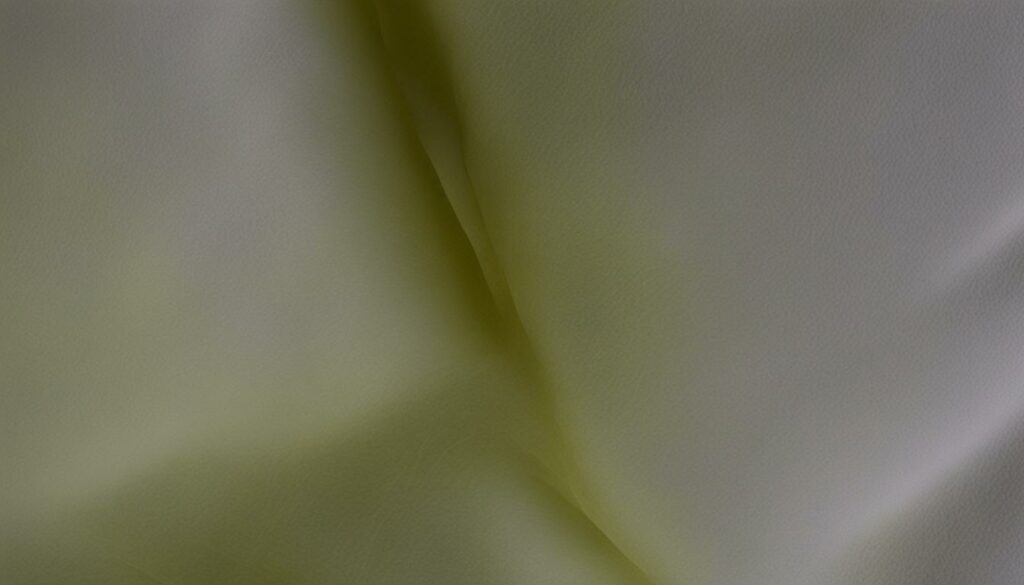
Maintaining Pillow Shape and Comfort
Over time, pillows can lose their shape and comfort, especially lower quality or synthetic ones. If you’re noticing lumps, a flattened shape, or lack of support, it may be time to replace your pillow. A quality pillow should be fluffy, thick, and smooth on the surface, allowing for optimal comfort and a restful night’s sleep.
“A good pillow is the key to a good night’s sleep. If your pillow is no longer providing the support you need or feels lumpy and flat, it’s time for a replacement.”
Signs Your Pillow Needs to be Replaced
- Lumps and unevenness: When you feel uneven areas or lumps in your pillow, it no longer provides proper support and comfort. This can lead to neck and shoulder pain.
- Flattened shape: If your pillow has lost its plumpness and appears flat, it has likely lost its ability to support your head and neck properly. This can result in discomfort and restless sleep.
- Lack of support: When your pillow fails to provide adequate support for your head, neck, and spine alignment, it can lead to morning stiffness and aches.
Remember, a pillow tailored to your sleeping preferences and body type is essential for a quality sleep experience. Investing in a new pillow that suits your needs can help you wake up feeling refreshed and revitalized.
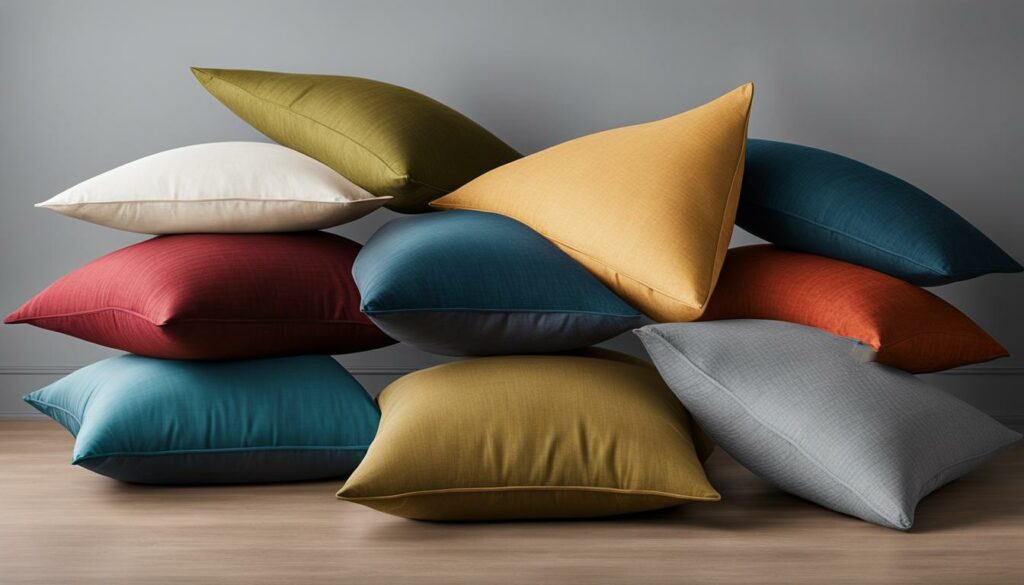
| Pillow Type | Shape Retention | Level of Comfort | Recommended Replacement Period |
|---|---|---|---|
| Memory Foam Pillow | Excellent | Firm | 2-3 years |
| Down Pillow | Good | Soft | 2-3 years |
| Polyester Pillow | Poor | Medium | 6-12 months |
| Buckwheat Pillow | Good | Firm | 5-10 years |
Pillow Replacement Based on Comfort Needs
Comfort is subjective and can change over time, especially due to bodily changes or a new bed. If you’ve experienced an injury, lifestyle change, or switched to a different mattress, it may be necessary to replace your pillow to ensure optimal comfort and sleep quality.
It is important to evaluate whether your current pillow is providing the necessary support for your changing needs. The right pillow can make a significant difference in your sleep experience and overall well-being.
Assessing bodily changes
Bodily changes, such as pregnancy, weight fluctuation, or aging, can alter your comfort preferences and support requirements. For example, expecting mothers may need extra support for their growing bellies, while individuals who have lost weight may find that their current pillow feels too firm.
Take the time to listen to your body and pay attention to any discomfort or pain you may be experiencing. If you notice that your pillow is no longer aligning with your changing body, it may be time to consider a replacement.
Adapting to a new bed
Transitioning to a different bed, whether it’s a firmer or softer mattress, can affect the way your pillow feels and performs. A change in the level of support provided by your new bed may require you to select a pillow that complements the new sleeping surface.
Make sure to test your current pillow on the new bed and assess whether it still offers the desired comfort and support. If it no longer aligns with your sleep needs, it may be necessary to explore alternative pillow options.
Quality sleep for optimal well-being
Quality sleep plays a crucial role in your overall well-being. A comfortable and supportive pillow can contribute to better sleep quality, allowing you to wake up feeling refreshed and rejuvenated.
Investing in a pillow that meets your comfort needs can enhance your sleep experience, promote proper alignment, and alleviate pressure points. By prioritizing your sleep quality, you can improve your overall health and daytime productivity.
Whatever your comfort concerns or sleep preferences may be, finding the right pillow is essential for a restful night’s sleep. Assessing bodily changes, adapting to a new bed, and prioritizing sleep quality are crucial factors to consider when determining if it’s time to replace your pillow.
Remember, a pillow that provides adequate support and aligns with your comfort needs can make all the difference in achieving a truly restful and rejuvenating sleep experience.
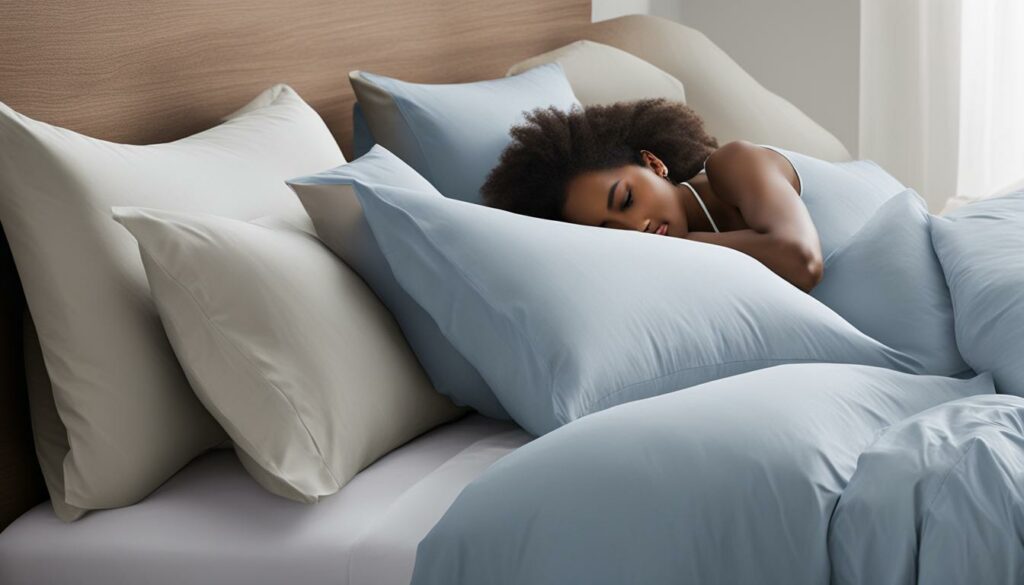
The Importance of Regular Washing for Pillowcases
Pillowcases play a crucial role in maintaining hygienic sleeping conditions and promoting healthy skin. Regularly washing your pillowcases is an essential practice that helps remove oils, debris, and bacteria that accumulate on them over time.
“By incorporating regular pillowcase washing into your cleaning routine, you can ensure a clean and fresh sleeping environment, free from acne-causing substances and other irritants,”
says Dr. Michelle Johnson, a dermatologist.
Best practice suggests washing your pillowcases every time you wash your bed sheets, which is typically once per week. This hygienic practice ensures that you are removing the accumulated oils, sweat, dead skin cells, and other debris that can harbor harmful bacteria and dust mites.
To achieve a thorough cleaning, it is recommended to:
- Use hot water: Hot water helps kill bacteria and other microorganisms that may have settled on your pillowcase.
- Choose a good detergent with enzymes: Enzyme-based detergents effectively break down oils and other organic substances that can cling to the fabric.
- Use appropriate bleach (if applicable): If your pillowcase can withstand bleach, using it according to the fabric and color guidelines can provide an extra level of sanitation.
By following these washing recommendations, you can maintain a high level of cleanliness, ensuring that your pillowcases are free from oils, debris, and bacteria that can contribute to skin issues and allergies.
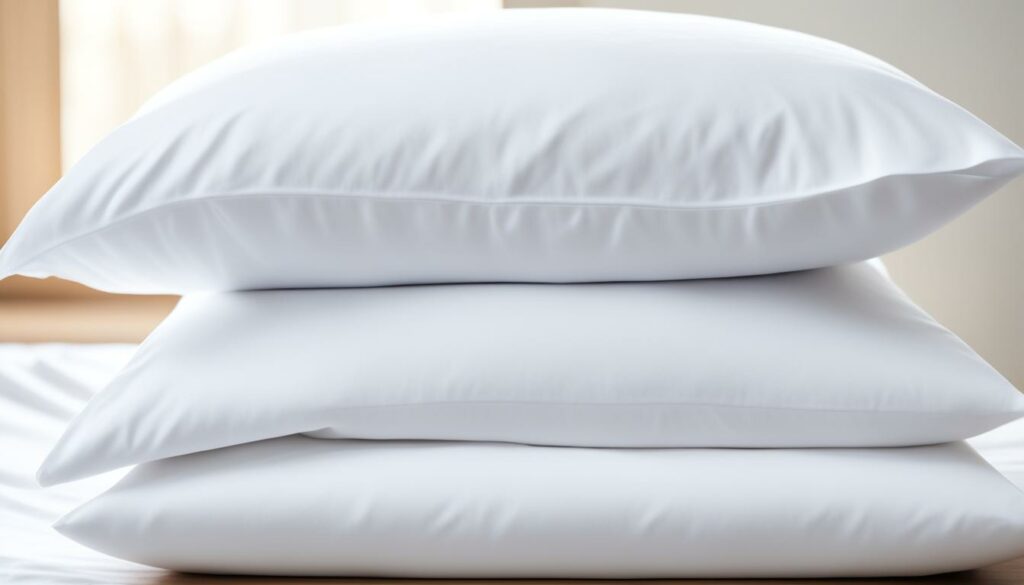
Material Considerations for Pillowcases
When it comes to choosing the right pillowcase material, you have a few options to consider. While there isn’t extensive research on the superiority of silk over cotton pillowcases, many experts recommend silk or bamboo-blend pillowcases for their smoother surface and gentleness on sensitive skin. Silk pillowcases are known for their luxurious feel and ability to reduce friction and minimize hair breakage. Bamboo-blend pillowcases are hypoallergenic and offer moisture-wicking properties, making them ideal for those with allergies or night sweats.
The choice of bedding material ultimately depends on personal preference and specific needs. Some people may prefer the softness and breathability of cotton pillowcases, while others may opt for the silky smoothness of satin sheets. It’s important to choose a material that feels comfortable against your skin and enhances your sleep experience.
Regardless of the material you choose, it’s crucial to practice proper pillowcase care and hygiene to maintain optimal skin health. Regularly changing and washing your pillowcase is key to removing oils, debris, and bacteria that accumulate on the surface. By following the recommended washing guidelines, you can ensure that your pillowcase remains clean and free of irritants.
Washing Recommendations for Different Pillowcase Materials
Here are some general washing recommendations for popular pillowcase materials:
- Silk Pillowcases: Hand wash or use the delicate cycle on your washing machine with gentle detergent. Air dry or tumble dry on low heat.
- Cotton Pillowcases: Machine wash on a regular cycle with warm water and a mild detergent. Tumble dry on low heat or air dry.
- Satin Sheets: Follow the same care instructions as silk pillowcases or refer to the specific manufacturer’s recommendations.
Always check the care instructions provided by the pillowcase manufacturer for any specific washing recommendations. Following these guidelines will help maintain the quality and longevity of your pillowcase, ensuring a clean and comfortable sleep surface.
Remember, whether you choose silk, cotton, or satin pillowcases, regular cleaning and timely replacement are essential for optimal skin health. By investing in high-quality pillowcases and practicing proper care, you can enjoy a restful sleep and wake up with refreshed, glowing skin.
Choosing the Right Pillow Replacement
When it’s time to replace your pillow, finding the perfect one to meet your comfort and support needs is essential for a good night’s sleep. That’s where Casper comes in. With their wide range of options, including down pillows, foam pillows, and hybrid pillows, Casper has something for everyone.
Whether you prefer the plush softness of a down pillow or the contouring support of a foam pillow, Casper’s collection ensures you’ll find the right fit. Their hybrid pillows combine the best of both worlds, offering the perfect balance of comfort and support.
Is your current pillow misshapen, dirty, or simply not providing the comfort you desire? It’s time to say goodbye and find your dream replacement pillow. Casper understands the importance of a good night’s sleep, which is why their pillows are designed to provide the utmost comfort and support, allowing you to wake up refreshed and ready to take on the day.
Don’t settle for a pillow that no longer meets your needs. Upgrade to a Casper pillow and experience the difference in comfort and support. Say goodbye to restless nights and hello to a blissful sleep with Casper
FAQ
How often should I change my pillowcase?
It is recommended to change your pillowcase at least two to three times a week for optimal skin health and to prevent breakouts.
What is the impact of pillowcases on skin health?
Pillowcases can accumulate dirt, makeup, and oils, which can lead to bacterial infections and breakouts. Regularly changing pillowcases helps maintain clearer skin and prevents skin issues.
Why is proper pillowcase care important?
Pillowcases can accumulate oils, debris, bacteria, dust mites, and acne-causing substances. Washing pillowcases every one to two weeks helps remove these irritants and promote hygiene.
What are the signs that it’s time to replace your pillowcase?
Stains, unpleasant odors, new allergy symptoms, and recurring acne on your cheeks can indicate the need to replace your pillowcase. These signs suggest a buildup of bacteria, oils, and allergens that washing alone cannot remove.
How can I maintain the shape and comfort of my pillow?
It’s time to replace your pillow if it has lumps, a flattened shape, or lacks support. A pillow should be fluffy, thick, and smooth on the surface to provide optimal comfort for a good night’s sleep.
When should I consider replacing my pillow based on comfort needs?
Changes in your body, bed, or sleep quality may require you to replace your pillow. If you’ve experienced an injury, a lifestyle change, or switched to a different mattress, it may be time to find a pillow that meets your updated comfort needs.
How often should I wash pillowcases?
It is recommended to wash pillowcases every one to two weeks to remove oils, debris, and bacteria. Best practice suggests washing pillowcases every time you wash your bed sheets, which is typically once per week.
What are the considerations for choosing pillowcase materials?
While there isn’t extensive research on the superiority of silk over cotton pillowcases, experts recommend silk or bamboo-blend pillowcases for their smoother surface and gentleness on sensitive skin. Regular cleansing and timely pillowcase changes are important regardless of the material.
How can I choose the right pillow replacement?
Casper offers a range of pillow options to meet your comfort and support needs. Whether you prefer down, foam, or hybrid pillows, Casper has various choices. If your current pillow is misshapen, dirty, or no longer providing the comfort you need, it may be time to find your dream replacement pillow.
Eric Christie stands as a luminary in the bedding industry, with a career spanning nearly four decades since the early 1980s. His journey through the world of bedding has seen him wear many hats – a manufacturer, designer, and retailer, showcasing his versatility and expertise in Read more...


